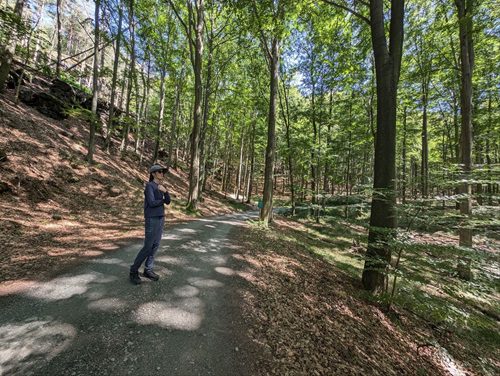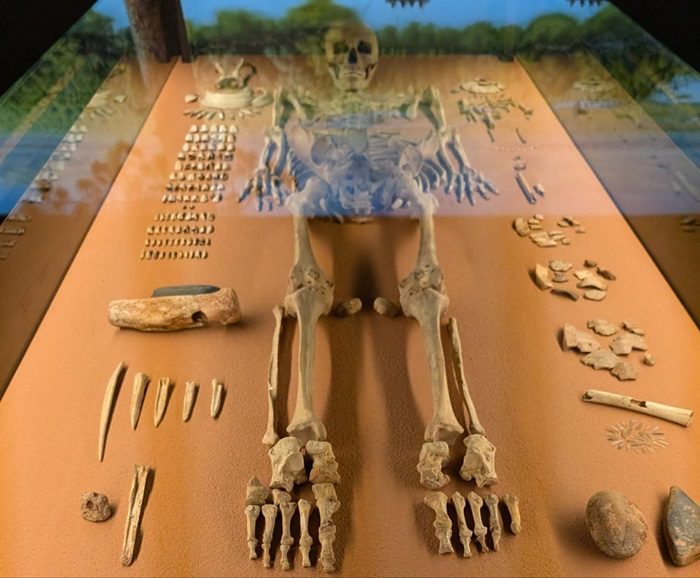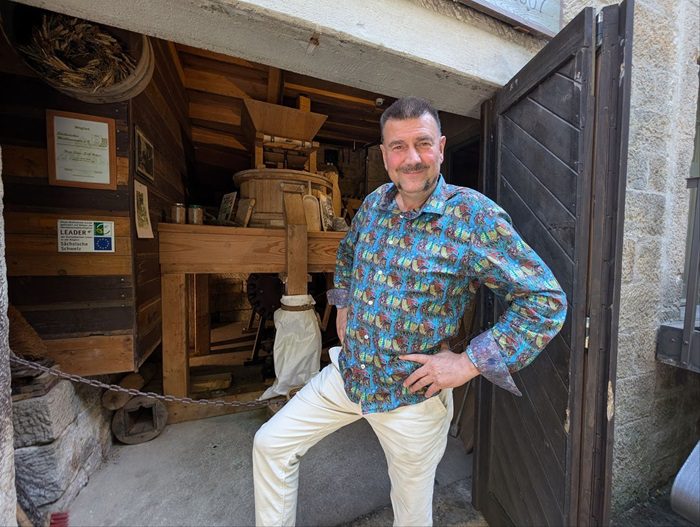 The Biostadt Schmilka, a sustainable resort on the bank of the Elbe river near the Czech border, looks like every other German village. There’s a Gasthaus, homes with immaculate gardens and fruit trees, and a river with colourful kayaks floating downstream.
The Biostadt Schmilka, a sustainable resort on the bank of the Elbe river near the Czech border, looks like every other German village. There’s a Gasthaus, homes with immaculate gardens and fruit trees, and a river with colourful kayaks floating downstream.
But Schmilka was never like the other German villages. As far back as the late 19th century, artists and affluent visitors came there to enjoy hiking among the sandstone monoliths that looked almost alpine and earned this place the nickname Sächsische Schweiz, or Saxon Switzerland. In the 1930s, they invented free climbing here, and during the Cold War, it was a border outpost closed to the rest of the world.
That’s when Sven-Erik Hitzer found it as a young man growing up in East Berlin.
“This was our Alaska, our wilderness,” says Hitzer, who created the Biostadt Schmilka after much of it was abandoned in the early 2000s. He reconstructed a mill, added a bakery and a brewery, and renovated the empty homes.
And then he discovered sustainability—the idea that a resort could conserve its natural resources, recycle, use renewable energy, and serve organic food. Hitzer went all in, opening Germany’s first certified “bio” resort.
It’s just one of the ways a unique German idea of sustainability has taken hold in the eastern part of the country, from Harz National Park to big cities like Leipzig. Tourism officials would like you to think that green vacations in the east of Germany are new. Still, a closer look at what’s happening suggests they are woven into almost every aspect of the visitor experience — and have been for a while.

Julianne Becker, co-owner of the Coconat work retreat near Bad Belzig, Germany, stands next to the facility’s compost heating system.
Getting a little work done in Bad Belzig
In Bad Belzig, a one-hour train ride from Berlin, the idea of sustainability is explored at a pioneering work retreat called Coconat. Julianne Becker, the retreat’s co-owner, says she wanted to take the concept of a co-working space further, giving people a place to stay and get work done. The facility is in a converted 19th-century farmhouse with wide-plank hardwood flooring and soaring ceilings. And the guests who aren’t reviewing spreadsheets on their laptop computers are in animated conversations about new business ideas.
“It is definitely not a hotel, at least in the traditional sense,” says Becker.
That nontraditional attitude extends to sustainability. Here, guests sort their own trash for recycling; there’s also a compost heating system that provides warmth to a workshop space, where artists and a half-completed robot will be used by a startup to create carbon-filtering components. In other words, although it’s rarely articulated, sustainability is part of everything people do at the resort.
Becker says that’s intentional. When she came up with the idea of a work retreat—an idea that has since been copied around the world—she didn’t want sustainability to be just another amenity. She says she wanted Coconat to make a difference in the community by nurturing young businesses and improving the environment by consuming fewer resources.
When discussing sustainability, a German word keeps coming up: selbstverständlich —of course. Why wouldn’t we do it that way?
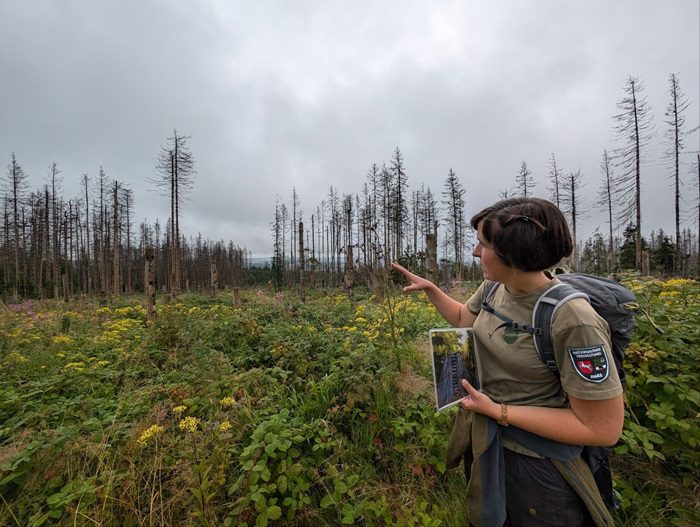
Park ranger Lisa Höhne surveys the Mondlandschaft — the “lunar landscape” — of spruce trees killed by the bark beetle.
Landing on the moon in Saxony-Anhalt
A short train ride away, in Wernigerode, another side of sustainability is being explored. Visitors to this popular resort destination in Saxony-Anhalt are drawn here by the famous narrow gauge railway, which takes them to Harz National Park. If you’re staying in the town centre in one of Wernigerode’s renowned hotels, such as the Travel Charme Gothisches Haus, it’s just a five-minute walk to the train station.
The park itself is not what you would expect. Park ranger Lisa Höhne calls it a lunar landscape for a good reason. The park is a graveyard of spruce trees consumed by bark beetles a few years ago. Park authorities realized that the insects were part of the natural life cycle because they invaded only the weaker trees. The dead trees provided food and shelter to plants and animals in the forest, ensuring its sustainability.
“We are currently witnessing how the young and much healthier mixed forest of tomorrow is establishing itself,” she says. “So really, when you talk about sustainability, this is an important part of it.”
Part of the national park’s mission is to educate visitors about the importance of this natural life cycle and sustainability and the fact that it has always been a part of this place.
In Bad Dürrenberg, a shaman and a garden show
The permanent exhibits at the State Museum of Prehistory remind us how far back Germany’s sustainability tradition goes. The early hunter-gatherers had to be mindful of their resources because their survival depended on them.
One of the museum’s star exhibits is the Bad Dürrenberg Shaman, a 9,000-year-old skeleton unearthed on the current site of the Saxony-Anhalt State Garden Show. Archaeologist Tomoko Emmerling says the shaman was a celebrity in her day, and her Mesolithic-era grave is evidence of that. It features a diversity of animals and other artifacts that suggest she was a revered member of society.
“Her grave contained, among a large array of other grave goods, a mask made of deer horns, tortoise shells, and several tiny stone blades, so-called microliths,” she says. “She was special.”
Curiously, the centrepiece of the state garden show is where archaeologists unearthed the shaman in the 1930s. Michael Steinland, the CEO of the state garden show, says scientists have been discovering more about the shaman recently.
“There’s evidence that people brought gifts to the grave hundreds of years after her burial,” he says.
Today, the area around the shaman’s burial site is a park with greenhouses, floral exhibits, and a completely intact graduation tower, used to remove water from a saline solution to produce salt. At 2,086 feet, it is the most extended graduation facility in Germany. It’s still in use today, and visitors can walk past it on a hot day to cool off and inhale the salty air.
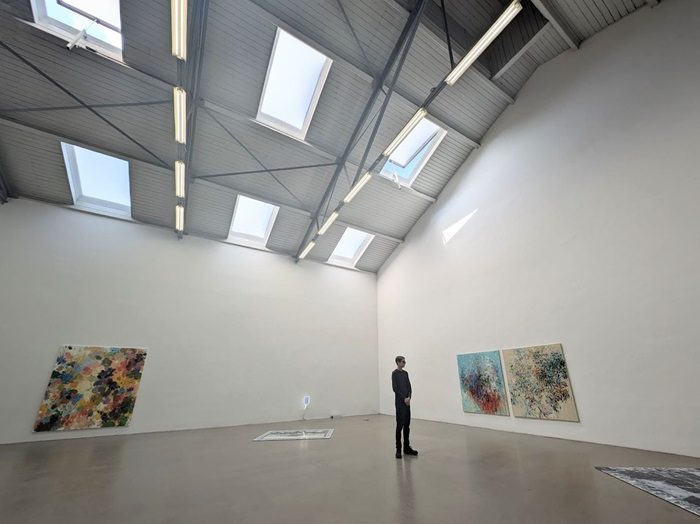
An art gallery in the Leipziger Baumwollspinnerei, one of the oldest cotton mills in continental Europe.
In Leipzig, a cotton mill has become a sustainable tourist attraction.
In eastern Germany, sustainability sometimes happens by chance. Consider the Leipziger Baumwollspinnerei, a sprawling early 20th-century cotton mill. After German reunification in 1990, people had no clear idea what to do with the facility. Developers wanted to turn the buildings into loft apartments but couldn’t find the funding. A lively art scene had already established itself on the site and occupied rooms as studios, including Leipzig’s most famous artist today, Neo Rauch.
That’s when its owners decided to invite artists to set up studios in the old warehouses. Today, more than 100 painters, sculptors, and visual artists have taken up residence in this industrial area, which also has galleries, a café, a cinema, and a theatre.
Resident artist and docent Evelina Boger says the art has transformed the area. Art investors have flocked to the cotton mill to scout out talented new artists who are part of the New Leipzig School of Art. That’s turned the Baumwollspinnerei into a tourist attraction in its own right—a place where visitors can stop by to look at the art, meet artists, and buy a sculpture or painting.
“It’s also an inspiring place,” says photographer and painter Boger. “Something about being in an industrial building makes you creative.”
What’s the future of sustainable tourism in Eastern Germany?
Hitzer, the creator of Biostadt Schmilka, says the future of “bio” tourism is bright—not just in Eastern Germany but in the region. He even created a listing of other certified sustainable hotels that go beyond recycling and a few solar panels. “They’re the real deal,” he says. And the list is growing.
The reason: People like the idea of a responsible vacation, says Hitzer. Organic food tastes better. You sleep better in a bed that hasn’t been laminated with harmful chemicals. All across Europe, people are starting to realise that a sustainable vacation is better, and they’re upgrading their trips to “bio.”
But sustainability can also be expensive. Hitzer also says he has a solution: He plans to restore an old farmhouse in Schmilka and turn it into a hostel with inexpensive rooms. That way, young people can discover Saxon Switzerland just as he did in his youth.
As eastern Germany embraces sustainable tourism, from eco-resorts to repurposed industrial spaces, it’s clear that going green isn’t just a trend—it’s becoming selbstverständlich.
Written by: Christopher Elliott
BIO:
Christopher Elliott is an author, consumer advocate, and journalist. He founded Elliott Advocacy, a nonprofit organization that helps solve consumer problems. He publishes Elliott Confidential, a travel newsletter, and the Elliott Report, a news site about customer service. If you need help with a consumer problem, you can reach him here or email him at chris@elliott.org.

